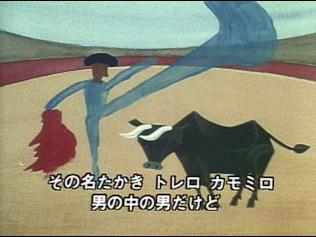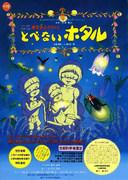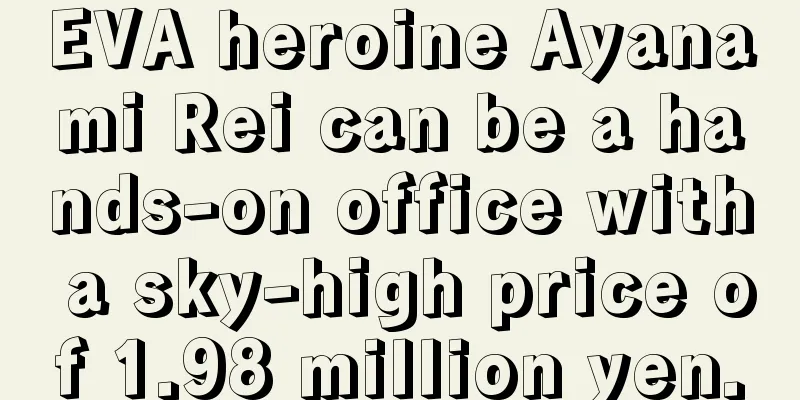Review of "Honor of the Horse": The moving stories of famous horses and their appeal

Detailed review and recommendation of Aibanohomare - Aibanohomareoverview"Aibanohomare" is an animated work that was released on January 1, 1930, and is still attracting attention today due to its historical value and unique content. The work was commissioned by the Livestock Insurance Division of the Ministry of Agriculture and Forestry, and was created by Sanae Yamamoto. The media it was released in is listed as "other," and the original media is "original anime," which is what makes it unique. Although it is a short work with only one episode, its content is profound, and it can be said to be a pioneering attempt to express the theme of livestock insurance in the form of animation. Background"Aibanohomare - Honor of the Beloved Horse -" was commissioned by the Livestock Insurance Division of the Ministry of Agriculture, Forestry and Fisheries. The background to this was largely influenced by the need to popularize and raise awareness of livestock insurance in Japan at the time. In the 1930s in Japan, agriculture was the main industry, and livestock was an important part of it. However, losses due to illness or accidents in livestock could be a major blow to farmers, so the importance of livestock insurance was increasing. Under these circumstances, the Ministry of Agriculture, Forestry and Fisheries aimed to widely communicate the significance and necessity of livestock insurance through the new medium of animation. Sanae Yamamoto, the creator of the series, was a notable figure in the Japanese animation world at the time. His works combined visual appeal with skillful storytelling while placing emphasis on educational elements. "Aibano Homare" is one example of this, and it uses various creative methods to convey the technical topic of livestock insurance in an easy-to-understand way for general audiences. Story and ContentThe story of "Aibano Homare, the Beloved Horse's Honor" depicts the importance of livestock insurance through the process of treatment and recovery of a farmer's horse, who falls ill. The main characters of the story are a farmer and his beloved horse, "Aibano Homare." Aibano Homare is an important part of farm work and is treasured as a member of the family. However, one day, Aibano Homare suddenly falls ill, and the farmer faces great difficulties. At this point, the farmer remembers that he has livestock insurance and contacts the insurance company. Thanks to the insurance company's swift response, Aivanohomare is able to receive appropriate treatment and recovers safely. This episode conveys to viewers the important role that livestock insurance plays in supporting farmers' lives. At the end of the story, Aivanohomare is shown healthily resuming his farm work, giving viewers a sense of hope and security. Animation Techniques and ExpressionsConsidering the technical standards of the 1930s, "Aibano Homare" is an animation of extremely high quality. In particular, the horses' movements and facial expressions are depicted with great care, pursuing visual realism. The backgrounds and colors are also skillfully used, beautifully expressing the rural landscape and seasonal changes. In this work, storytelling and visual expression work closely together to convey an educational message. For example, scenes showing Ivano Homare suffering when he becomes ill and receiving treatment emphasize the visual impact to stir emotions in the viewer. Meanwhile, scenes showing Ivano Homare looking healthy after he recovers and the smiling faces of the farming family visually communicate the effectiveness and value of livestock insurance. Historical value and influence"Aibano Homare" occupies an important place in the history of Japanese animation. In the 1930s in Japan, animation was still a new medium, and its potential was being explored. This work was a pioneering attempt to express educational content through animation, and it had a major impact on the subsequent development of educational animation. The film was also praised as an effective means of communicating a technical topic - livestock insurance - to a general audience. Commissioned by the Ministry of Agriculture, Forestry and Fisheries, it set a precedent for a government agency to use animation to communicate social messages, paving the way for subsequent use of animation in public service announcements and educational campaigns. Recommendations and ratings"Aibano Homare" is a work that can be recommended to a wide range of audiences due to its historical value and depth of content. It is a must-see, especially for those who are interested in the history of animation or educational animation. It will also be a good opportunity for those who work in agriculture or livestock-related jobs to reaffirm the importance of livestock insurance. The film has been highly praised for its story structure, visual expression, and the way it conveys its educational message. Its quality and completeness are particularly astonishing, considering the state of the art in the 1930s. It has also been praised for its ingenuity in conveying the specialized topic of livestock insurance to a general audience in an easy-to-understand way. Related information and supplementsDetailed information about "Aibanohomare - Honor of the Beloved Horse -" can be found in the following books and materials.
In addition, other works by Sanae Yamamoto, who was involved in the production of this work, also contain many interesting works, and we also recommend the following works.
Additionally, up-to-date information and related resources on livestock insurance can be found on the following websites:
Conclusion"Aibanohomare" occupies an important place in the history of Japanese animation in the 1930s, and is a work that can still be recommended to many viewers today due to its profound content and educational value. It was a pioneering attempt to express the specialized theme of livestock insurance in the form of animation, and it had a major impact on the subsequent development of educational animation. Highly acclaimed from various angles, including the structure of the story, the visual expression, and the way it conveys its educational message, this work combines historical value with profound content, making it a true "honor for the horse." |
<<: Review of "Akatsuki no Sora": Beautiful visuals and a moving story
>>: Evaluation of "Fertilizer Mixture": A thorough explanation of ingredient balance and effects
Recommend
The first Chinese trailer of the movie version of "Breaking Bad" was released on October 11
Netflix released the first Chinese version of the...
"The Legend of Sword and Fairy VI: Pray Today" suddenly started airing and the female lead's voice was complained by the audience
Yesterday (January 18), the TV series "Legen...
New stills of the horror movie "It's Dark Outside the Triangle Window" will be released on January 22, 21
The new horror film "The Night Outside the T...
NetEase Pictures' Onmyoji adaptation movie "The Order of the Samurai" released a new trailer and will be released on the first day of the Lunar New Year in 2021
The movie "Order of the Samurai" releas...
Madonna's "Fire Teacher" - A thorough analysis of the appeal and emotion of passionate instruction
"Madonna: Teacher of Fire": The appeal ...
The director personally responded to the rumors of the sequel to "Joker": There is no work at all at the moment
Previously, Deadline and The Hollywood Reporter h...
The appeal and evaluation of "Korosensei Q!": A must-read review for anime fans
Comprehensive review and recommendation of "...
The first poster and trailer of DC movie "The Flash" are coming soon
The first poster of DC movie "The Flash"...
The Lord of the Rings: The Power of the Rings Season 2 trailer reveals the dark Sauron
Prime Video recently released a new trailer for T...
"Chou Mashin Hero Wataru" review: What is the appeal of this nostalgic anime classic?
Super Mashin Hero Wataru - Super Mashin Hero Wata...
Zhang Jin and Tony Jaa co-star! Ip Man spin-off "Zhang Tianzhi" is officially scheduled
According to domestic media reports, the first sp...
In October, the national movie box office reached 7.571 billion yuan, ranking second in Chinese film history.
According to data from Lighthouse Professional Ed...
The president of the animation studio "Demon Slayer" was publicly tried for the first time and admitted to evading 130 million in taxes in three years
The superhero anime "Demon Slayer: Kimetsu n...
A thorough review of the wilderness shootout in "Pandora and Akubi"!
"Pandora and Akubi: A Story of Curiosity and...
Iron Man: A thorough analysis of the appeal and evolution of the Marvel hero
Iron Man: The appeal and reviews of the Japanese ...









